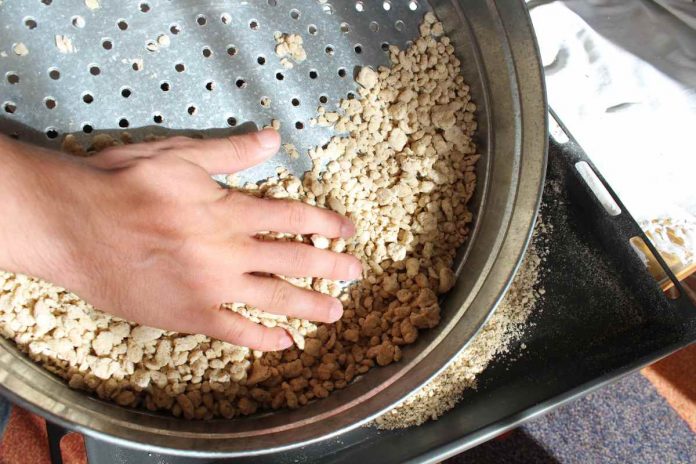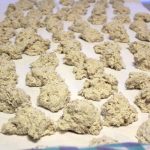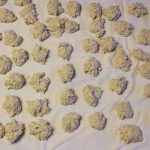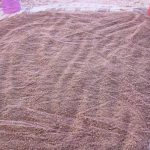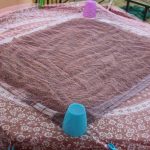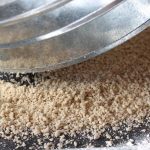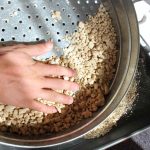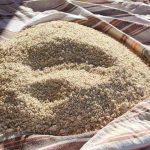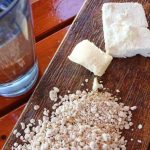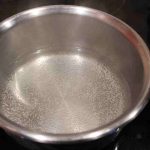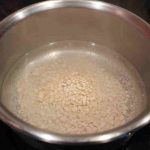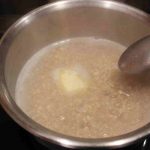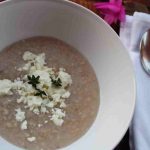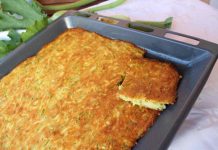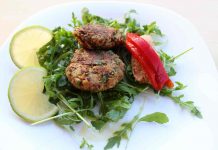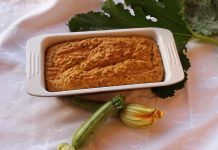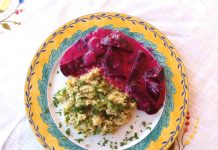Trahana pasta, Gluten-free
Ingredients
For gluten-free trahana pasta only with pastry flour:
- 1 kg goat’s milk (unboiled)
- 1,2 kg pastry flour
- 40 g grounded flaxseed
- minimum salt
For gluten-free trahana pasta only with buckwheat flour:
- 1 kg goat’s milk (unboiled)
- 1,2k g 100% buckwheat flour
- 20 g grounded flaxseed
- minimum salt
Gluten-free Trahana pasta.
The kitchen of the poor in Greece had found the way to preserve, for the difficult winter days, the excess of milk and freshly milled flour during the summer months.
So our wise people took care of having food reserve for the winter that formed their daily diet basis.
Flour and milk were denatured in nutritious trahana pasta.
And of course all that we have gluten issues we can use gluten-free flours and have our own home-made trahana pasta !!
If the use of unboiled milk scares you, you can replace it of course with boiled milk (or ready from the supermarket shelf).
It will be a little tasteless but the result will compensate you anyway.
Apart from its simpler form of soup, we can add it to pies, souffle and wherever we imagine!
The extensive way that I’m going to describe you is the most traditional and usual-in my opinion-. But there is also the “lazy” way that is much shorter. You can see it in detail here: in the organized action by “Celiac Action” where I participated.
Method
Combine the milk with flour and rest of ingredients.
Both proportions of ingredients for trahana recipes are made in the same way (with pastry flour or 100% buckwheat flour).
Our mixture should stand for about 1 hour so to absorb the moisture from the milk.
We start making small or bite-sized balls of our mixture, which should be dried (to “stay”) for 1 to 2 days at the most, so that our mixture will be dried enough.
If the mixture is too soft to make small balls, add some more flour – but not much because it should not be too stiff.
At this stage (after 1-2 days), the pieces of our trahana must have absorbed most of the mixture’s moisture.
If they’re still moist, add some flour and mix so to start sieving the mixture.
We take a large bowl and place our mixture with the extra flour (if necessary).
On a traditional sifter or if we want a multi-machine (but in very small quantities) we start making our trahana pasta.
Its texture will be small grains, but easily distinguished between.
Spread the trahana in a parchment paper or a piece of clean cloth (maybe a tablecloth) and leave it during sunshine hours in the sun.
Of course we cover our trahana, which is outside, with a piece of tulle.
It is a good idea to make sure that the tulle has a distance from the mixture – not to be flat – so that it can be properly ventilated but the insects have no access to it.
Be careful not leave it outside when it is damp or at night. (At night should not be left out !!)
Our trahana must dry well and become granular and crispy.
Alternatively, we can leave the trahana in the parchment paper and dry it in the oven at 50C degrees until it dries completely.
It definitely wants about 7 hours in total.
Do not try to raise the temperature because it will be cooked (so it will be dissolved in the boil) and will not dry properly.
After finishing with the drying of trahana pasta we store it in sackcloth (my mother uses old pillowcases!) or in glass jars.
We take care to keep it in a shady place without humidity.
We can also store it in plastic bags that seal airtightly.
For more preservation time, store it in your refrigerator (it will last up to a whole year).
And once we have it ready, here is the simplest (and traditional in my opinion) preparation of trahana pasta:
- For two portions
50 g trahana pasta
300 g water
80 g feta cheese or hard white cheese (ideally goat’s)
a spoon of fresh cow butter
minimum salt
Boil the water in a saucepan
Pour the salt and the trahana pasta and let it boil in medium to low heat for about 4 to 5 minutes.
Stir occasionally so not to stick.
If our mixture gets too sloppy (because of the high heat), add some extra hot water.
Once our trahana pasta boils and has basically rised doubled, we remove our saucepan from the heat.
Add the butter and stir.
Serve directly on plates and shred cheese over each dish.
Enjoy it warm and musky – especially in cold winter evenings !!!
Trahana pasta raw with flour (pastry flour), nutritional information per 100 g
Energy / calories: 221.13 kcal
Proteins: 3.69 g
Carbohydrates: 43.73 g
Fat: 2.9 g
Trahana pasta (raw) with buckweat, nutritional information per 100 g
Energy / calories: 217.24 kcal
Proteins: 8.58 g
Carbohydrates: 41.16 g
Fat: 3.79 g





